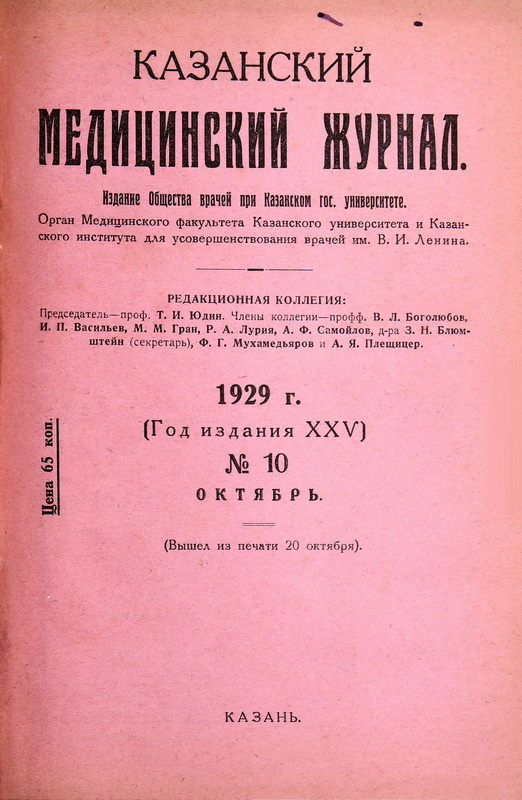Действительно ли опухольные клетки имеют особое сродство к свинцу по сравнению с другими клетками организма. Kawata (Beitr. Pathol. Anat. Bd. 82, H. 2. 1929)
- Авторы: Вылегжанин Н.
- Выпуск: Том 25, № 10 (1929)
- Страницы: 1110-1110
- Раздел: Статьи
- Статья получена: 16.09.2021
- Статья одобрена: 16.09.2021
- Статья опубликована: 15.10.1929
- URL: https://kazanmedjournal.ru/kazanmedj/article/view/80318
- DOI: https://doi.org/10.17816/kazmj80318
- ID: 80318
Цитировать
Полный текст
Аннотация
Для решения вопроса, действительно ли опухольные клетки имеют особое сродство к свинцу по сравнению с другими клетками организма Kawata (Beitr. Pathol. Anat. Bd. 82, H. 2. 1929) пытался определить количества свинца, поглощаемого опухолью по сравнению с печенью, легкими и почками. Для опыта брались мыши с привитым раком, а определение свинца производилось чрезвычайно чувствительным методом радиоактивного анализа золы опухолей и сравниваемых органов.
Ключевые слова
Полный текст
Для решения вопроса, действительно ли опухольные клетки имеют особое сродство к свинцу по сравнению с другими клетками организма Kawata (Beitr. Pathol. Anat. Bd. 82, H. 2. 1929) пытался определить количества свинца, поглощаемого опухолью по сравнению с печенью, легкими и почками. Для опыта брались мыши с привитым раком, а определение свинца производилось чрезвычайно чувствительным методом радиоактивного анализа золы опухолей и сравниваемых органов. Тщательное измерение показало, что опухоль никаким особым сродством к свинцу не обладает, наоборот, металла в опухольной ткани находилось обычно значительно меньше, чем в других органах. По мнению автора терапевтическое действие коллоидальных растворов тяжелых металлов, свинца, следует объяснить их влиянием на сосудистую систему опухолей или непосредственно, или через нервную систему.
Список литературы
Дополнительные файлы






